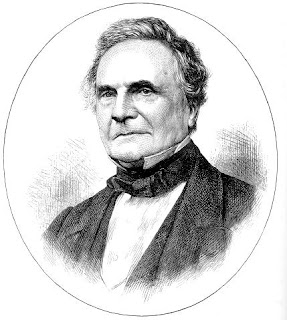The next big step for computers arrived in the 1830's when Charles Babbage decided to build a machine to help him complete and print mathematical tables. Babbage was a mathematician who taught at Cambridge University in England. He began planning his calculating machine calling it the Analytical Engine. The idea for this machine was amazingly like the computer we know today. It was to read a program from punched cards, figure and store the answers to different problems, and print the answer on paper. Babbage died before he could complete the machine. However because of his remarkable ideas and work, Babbage is know as the Father of Computers.
 |
| Analytical Engine |
 |
| Tabulating Machine |
Thanks to Hollerith's machine, instead of taking seven and a half years to count the census information it only took three years, even with 13 million more people since the last census. Happy with his success, Hollerith formed the Tabulating Machine Company in 1896. The company later was sold in 1911. And in 1912 his company became the International Business Machines Corporation, better know today as IBM.



No comments:
Post a Comment